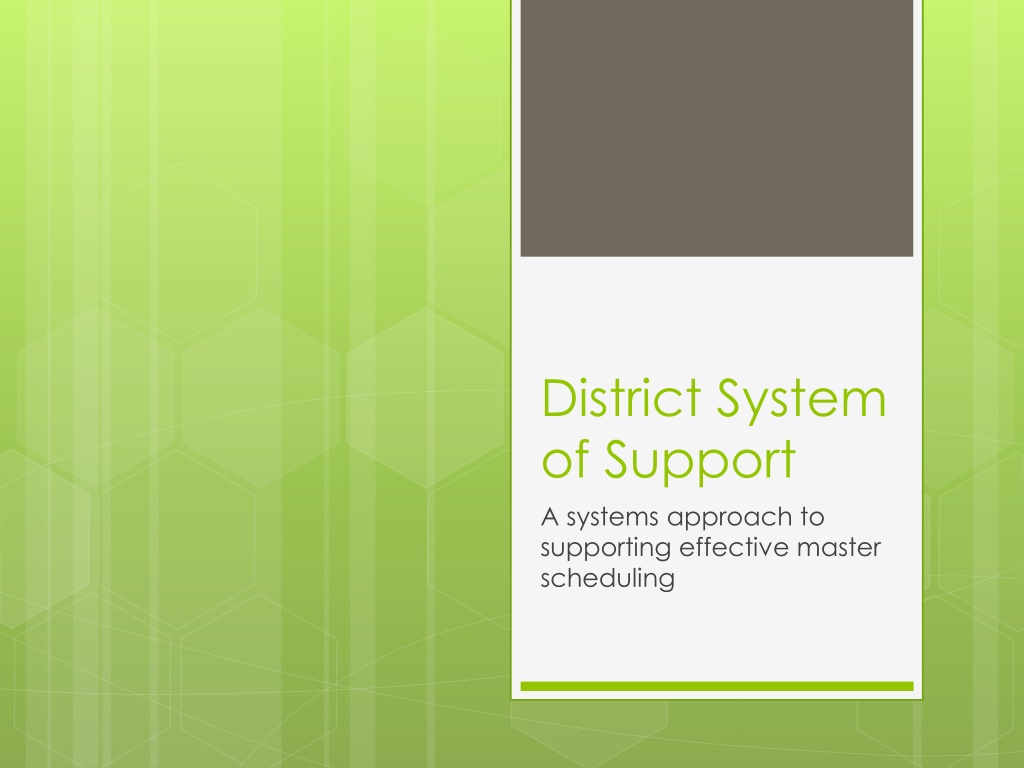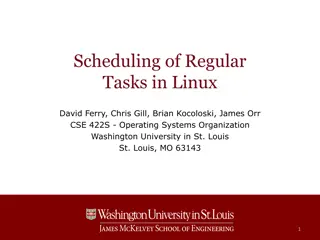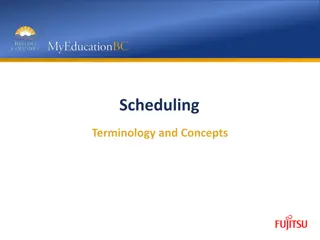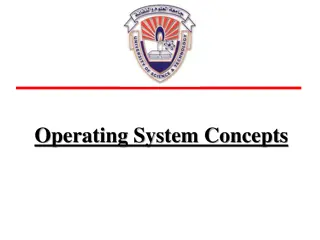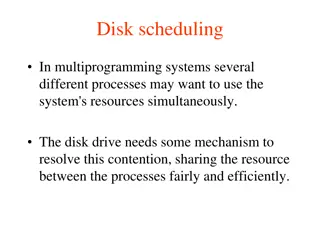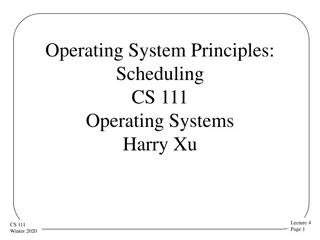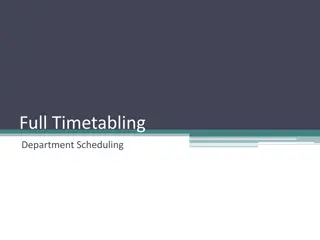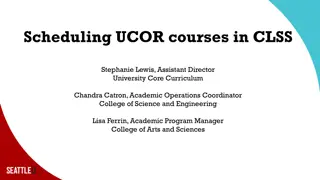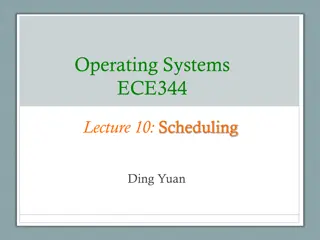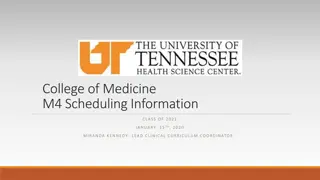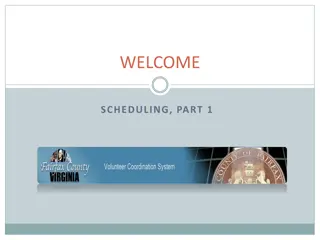District System of Support for Effective Master Scheduling
Explore the role of districts in supporting effective master scheduling through a systems approach, understanding key definitions, becoming a learning organization, and shifting from a programmatic to a systemic approach. Addressed challenges include principal support and collaboration time for teachers to enhance student outcomes.
Download Presentation

Please find below an Image/Link to download the presentation.
The content on the website is provided AS IS for your information and personal use only. It may not be sold, licensed, or shared on other websites without obtaining consent from the author. Download presentation by click this link. If you encounter any issues during the download, it is possible that the publisher has removed the file from their server.
E N D
Presentation Transcript
District System of Support A systems approach to supporting effective master scheduling
The Role of the District in Supporting Effective Master Scheduling
Some Systems Definitions A system is a set of elements that function as a whole to achieve a common purpose. A subsystem is a component of a larger system; for example, a high school is a subsystem of a larger district (supra-) system. Systems are often characterized by synergy the idea that the whole (system) is greater than the sum of its parts (elements), since the relationship among elements adds value to the system.
The District as a Learning Organization A District as a learning organization is a system where people continually expand their capacity to create the results they truly desire, where new and expansive patterns of thinking are nurtured, where collective aspiration is set free, and where people are continually learning to see the whole together. Peter Senge, The Fifth Discipline: The Art and Practice of the Learning Organization
A programmatic approach vs. a systemic approach Tackling apparent symptom/s rather than addressing the underlying cause of the problem Seeing the water rise in a sinking boat (symptom) and bailing the water out (quick fix) rather than fixing the leak (real problem)
Problem Statement Principal Support: Site principal does not adequately understand academy needs and therefore does not provide the level of support necessary for high quality implementation Collaboration Time: Academy teachers do not have adequate collaboration time to design, monitor, and evaluate multidisciplinary projects, examine data, and address student needs (source: R. Stearns & M. Henson)
Programmatic Solution Principal Support: A district administrator or external support provider takes the principal under his/her wing to promote awareness; or replace the principal with someone who is more supportive. Collaboration Time. On an academy-by- academy basis, negotiate scheduling solutions and/or union waivers that would allow for additional planning time. (source: R. Stearns & M. Henson)
Systemic Solution Principal Support. Establish an ongoing principal leadership development program that systematically builds awareness and capacity of site administrators to deeply understand, support, and provide bold leadership that promotes high quality academy implementation Collaboration Time. Establish district-wide policies and practices that support common planning time for academy teacher teams as a priority when developing master schedules. (source: Roman Stearns (ConnectEd California) & Mike Henson (NAF))
Effective District systems An effective educational system (District) optimizes not only the relationship among the elements (the schools, etc.) but also between the educational system and its environment. An effective educational system (District) is more open, more organic, more pluralistic, and more complex; it is less hierarchical and more about distributed leadership and collaborative work; it functions as a highly purposeful learning organization.
A systems approach Acknowledges the District s role in supporting and creating capacity for effective Master Scheduling Considers the interrelationships, interdependencies, and competencies among the components and levels of the system
A systemic approach Recognizes that a desired change in one part of a system is accompanied by changes in other components and levels that are necessary to support the desired change. Recognizes interrelationships, interdependencies, and competencies between the District s educational system and the larger community, including parents/families.
A systems approach Districts are best positioned to align the master schedule development process with other key reforms such as implementation of the Common Core, human-capital and capacity building strategies, acceleration and intervention supports for students, performance and accountability standards, postsecondary partnerships, and internal and external relationships. Districts are best positioned to design for scalability and long term sustainability.
Systemic Approach A clear focus on the importance of effective master schedules in creating the necessary conditions for quality teaching and learning and supporting all students to graduate college and career ready Commitment to Linked Learning pathways/ college and career academies as the model for high school redesign and to schedules that support interdisciplinary learning communities.
A systems approach Requires balance and clarity on division of labor between district and school sites. Requires rethinking structures, policies, and practices Creates coherence by identifying system-wide goals & outcomes; developing a framework/roadmap for the scheduling process; clarifying any non-negotiables; and encouraging creative use of resources.
A systemic approach Aligns work throughout the system Promotes collaboration, continuous learning, trust, and transparency Includes commitment to collection, analysis, and use of data in a continuous improvement process Includes a shared sense of ownership and responsibility at all levels in the system
Working systemically involves Scanning the System Analyzing the System (collect & organize data, gap analysis) Planning Action Taking Action and Monitoring Progress Assessing and Reflecting on Outcomes
A Systems Approach in the Master Schedule Context A few examples Developing District-wide Master Schedule Framework with Guiding Principles and a Master Schedule Timeline Developing a platform, flexible guidelines, templates, and supporting materials for site- specific Master Schedule Notebooks with expectations of stage- specific deliverables
Systems Approach in the Master Schedule Context Providing training, mentoring, coaching, and other technical assistance Building the master schedule knowledge and skills of those responsible at the school sites; Building a community of practice around master scheduling
Systems Approach in the Master Schedule Context Regularly providing data to inform the Master Schedule Process Convening Master Schedule Teams for Master Schedule Rounds a la Instructional Rounds and Collaborative Assessments, both formative and summative
An Invitation to Share CCASN will continue to add and refine resources and tools included in the CCASN Master Schedule Guide. We invite you to share your own master schedule tools, strategies, and effective practices. Please share resources and suggestions with Patricia Clark (patricia510@gmail.com) and/or Phil Saroyan (jp9@jps.net) THANK YOU.
